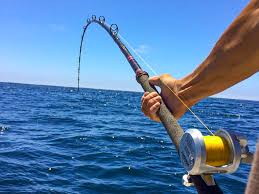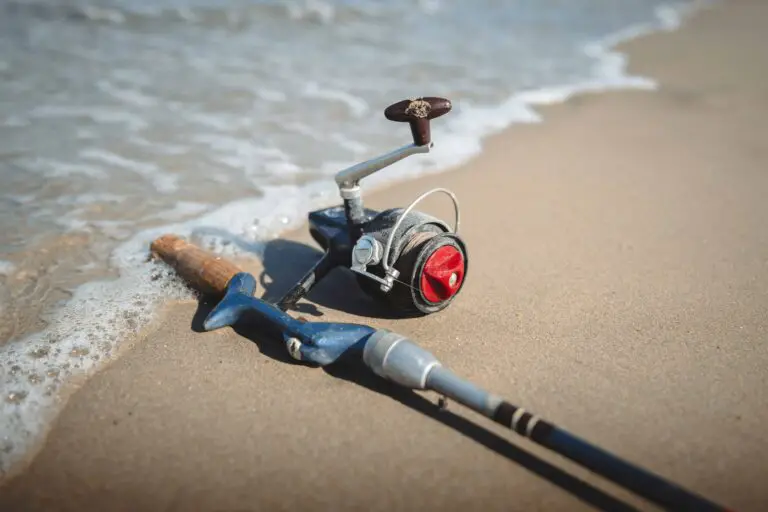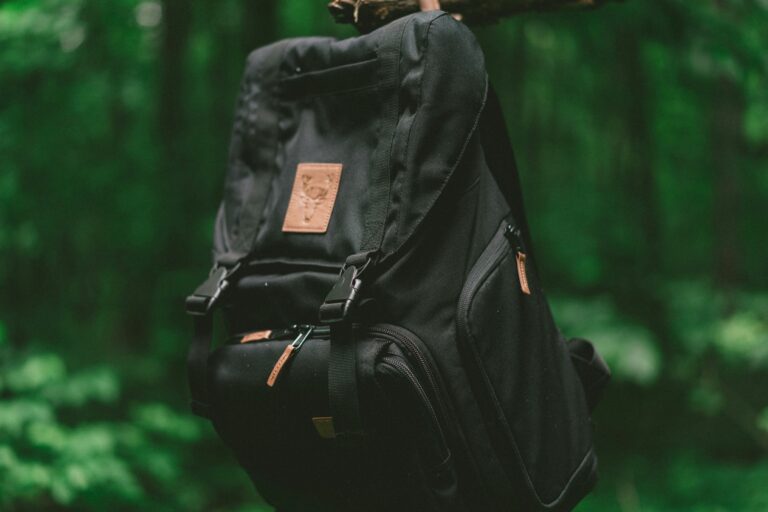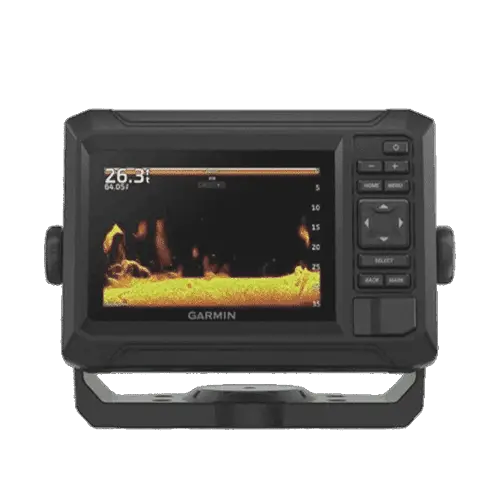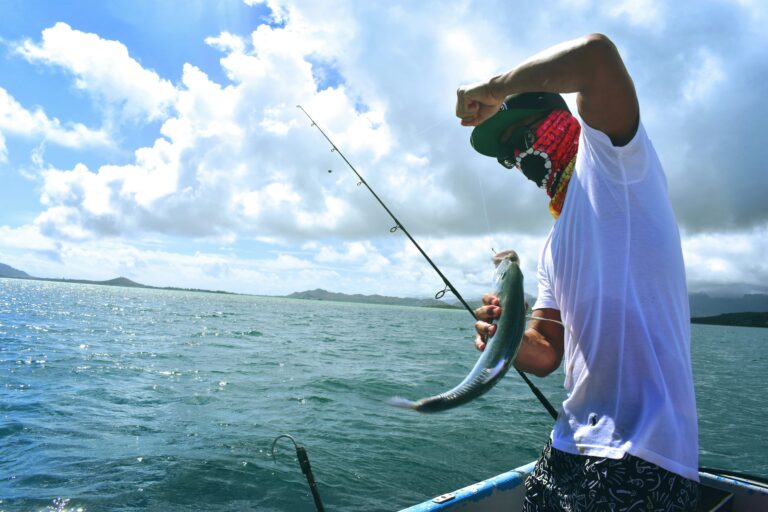How To Find A Good Fishing Spot on The Beach 2024
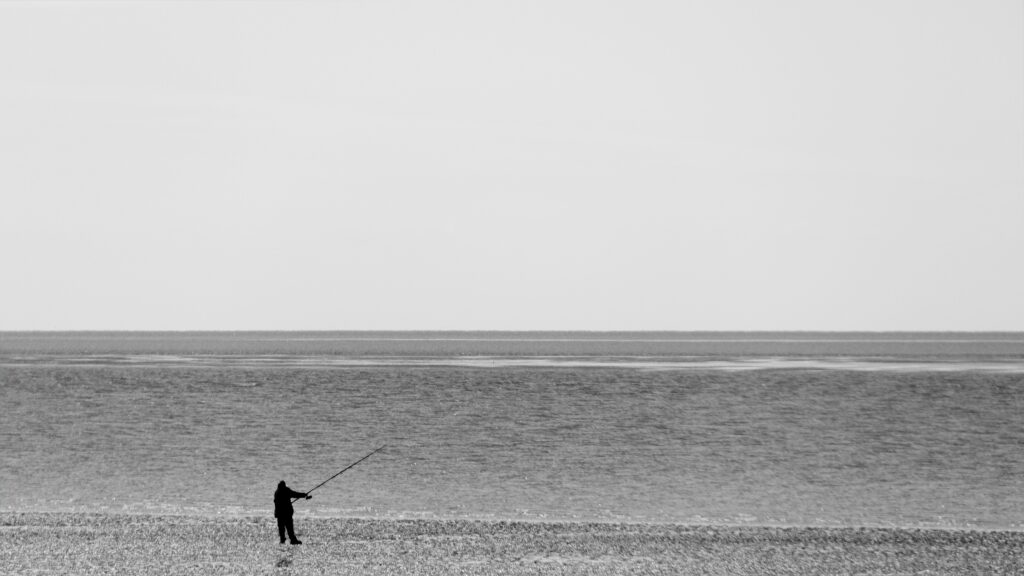
Hello there, seashore angler!
If you do not want to move and return home empty-handed after an afternoon at the seaside, you’ve got to come to the proper location. Finding a top-notch fishing technique at the seashore is probably like seeking out a needle in a haystack.
However, with some information, assertions, and quite a bit of staying strength, you’ll be able to turn the tide in your favor. In this newsletter, I will walk you through all you need to know about locating a unique fishing website online on the beach. So, take care of your gadget and be geared up to plunge in!
How To Find A Good Fishing Spot on The Beach
Finding an amazing fishing spot on the seashore can be a profitable experience! Here are a few pointers that will help you find the pleasant spots:
Look for Structures: Fish have a tendency to gather around systems like sandbars, troughs, factors, and wallets. These areas provide refuge and food for fish.
Check for rip currents: Rip currents can create deeper channels where fish want to feed. Look for areas where waves wreck inconsistently or water flows again out to sea.
Observe Bird Activity: Birds diving into the water regularly imply the presence of baitfish, which attract larger fish.
Use Technology: Apps like Google Earth and FishBrain let you become aware of potential fishing spots with the aid of underwater systems and other features.
Scout During Low Tide: Low tide can monitor hidden structures like holes and cuts inside the sand, which are splendid for fishing, while the tide comes lower back in
Talk to Locals: Local bait stores and fishing boards can offer treasured insights into the first-class spots and current conditions.
Consider the Tides: Fish are extra active in the course of certain tidal moves. High tide and the hours around it are frequently the most pleasant times to fish.
The Beach Fisher’s Toolbox: Must-Have Equipment
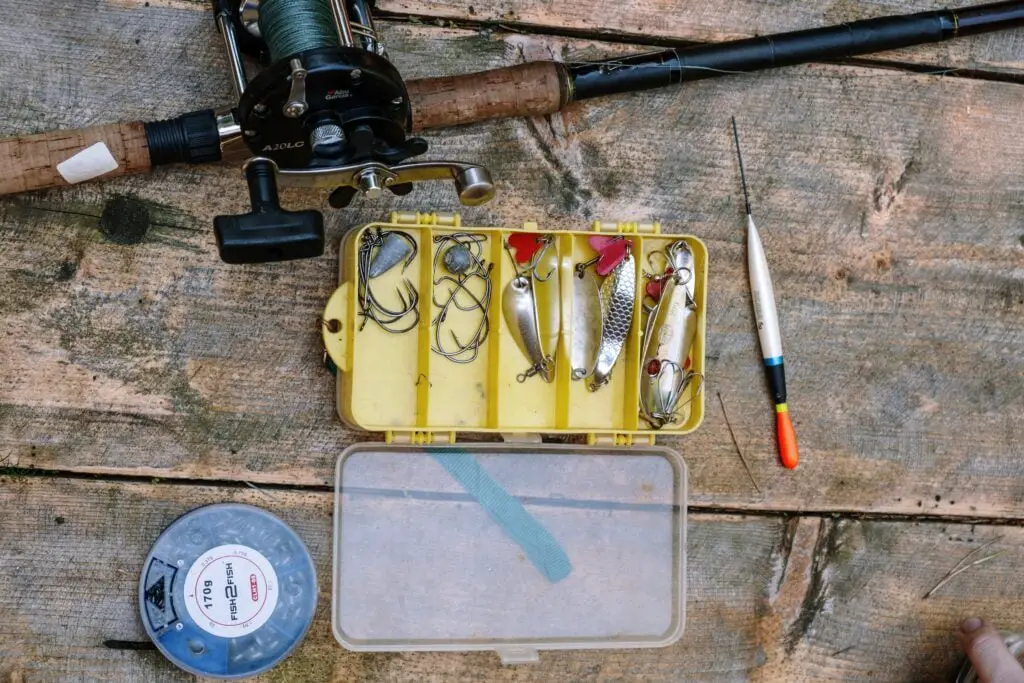
Why Your Gear Matters
Let’s be real: your fishing gear needs to make or damage your seaside fishing revel. Whether you’re a pro angler or just getting started out, having the precise equipment is critical. It’s now not just about casting a line into the water; it’s about optimizing your possibilities of success.
A great device allows you to strong farther, feel bites more effectively, and, in the long run, reel in that big capture. Plus, the proper gadget ought to make your day on the seashore extra exciting and less worrying. So, let’s dive into what you absolutely want to add to your seashore fishing toolbox.
The Essentials: Rods, Reels, and Lines
When it involves rods, you’ll need something strong but flexible. A medium-to-heavy motion rod is right for seashore fishing because it permits you to forge further and address large fish that regularly lurk within the surf. Pair your rod with a reel that’s built to face up to the hard saltwater environment.
A saltwater spinning reel with corrosion-resistant components is a necessity. As for the fishing line, opt for a robust, abrasion-resistant line. Braided traces are a famous preference because of the reality that they offer awesome sensitivity and power, permitting you to revel in even the slightest nibble.
Bait and Lures: Matching the Hatch
The key to satisfying fishing frequently lies in “matching the hatch.” This means the use of bait and lures that mimic the herbal prey of the fish you’re targeting. Live bait like shrimp, sand fleas, and decrease bait are tried-and-actual options for beach fishing.
If you select synthetic lures, pick out ones that resemble the close-by baitfish. Soft plastics, jigs, and spoons may be powerful, depending on the species you’re after. Remember, the greater your bait or trap seems and acts like the actual trouble, the more likely it’s to attract a hungry fish.
Optional, however handy: beach chairs, coolers, and sun protection.
While no longer surely essential, there are some gadgets that can make your beach fishing experience extra snug. A strong seashore chair can offer you a place to take a seat and lighten up at the same time as looking forward to a bit.
A cooler is handy for maintaining your bait and storing any fish you seize. And don’t forget about approximately sun safety: sunscreen, a hat, and polarized solar sunglasses are key to staying steady and comfortable beneath the sun. After all, nobody wants to quit their fishing and revel in an ugly sunburn!
Having the proper gadget sets the stage for a successful and exciting day of beach fishing. Whether you’re after a trophy fish or simply a calming day through the water, being well-organized with the requirements—and a few optionally to be had comforts—may want to make all of the difference.
Understanding the Beach: A Fisherman’s Canvas
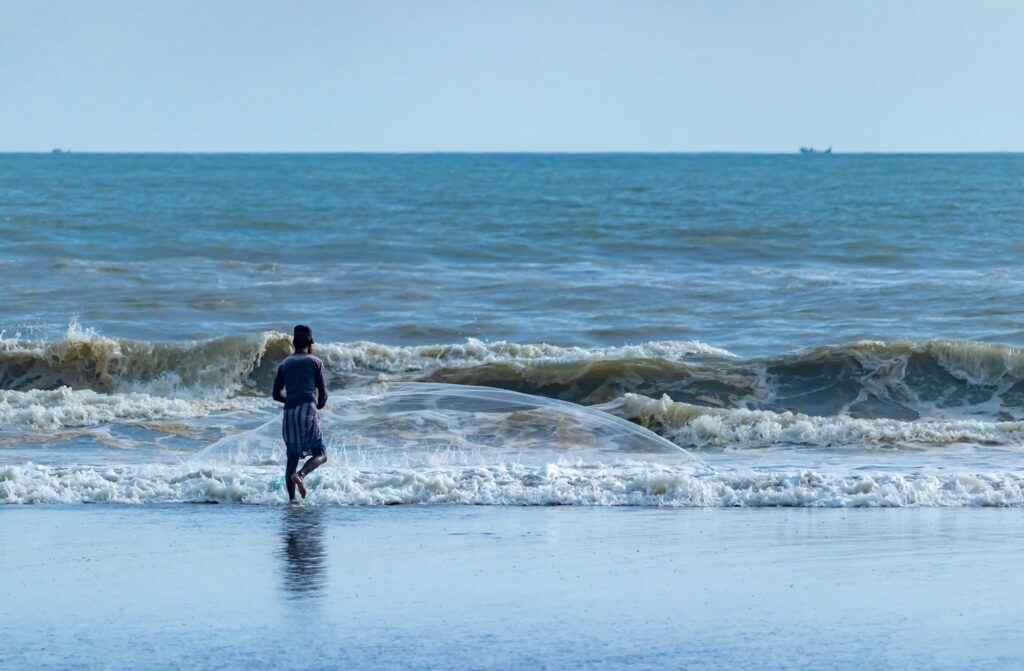
What Makes a Beach Good for Fishing?
Not all seashores are created equal with regards to fishing. High-quality fishing spots are commonly observed wherein the underwater terrain creates natural habitats and feeding grounds for fish. An appropriate seaside for fishing frequently has a combination of shallow and deeper waters, with structures like sandbars, troughs, and rips that appeal to and maintain fish.
Additionally, an effective fishing beach generally has easy water, minimal seaweed, and is unfastened from an excessive amount of human activity. The key is to find a seashore where fish are clearly interested in feed, relaxation, or travel; that is, wherein you’ll have high-quality probabilities of fulfillment.
Reading the Beach: Sandbars, Troughs, and Rips
Understanding the format of the beach is like gaining knowledge of a map—it facilitates pinpointing where the fish are in all likelihood to be. Sandbars are submerged ridges of sand that run parallel to the shore and are frequently visible as areas wherein waves smash continuously. Fish have a tendency to gather around sandbars due to the fact that they offer a safe haven and create feeding possibilities because the waves churn up food.
Troughs are deeper channels that run among the shore and sandbars or among a couple of sandbars. These channels are high-fishing spots because they act as highways for fish shifting alongside the beach. The deeper water in troughs presents protection for fish, and they frequently cruise these regions on the lookout for food.
Rips, or rip currents, are rapid-moving channels of water that flow from the shore out to deeper waters. They are easy to identify due to the fact that they regularly appear as regions of uneven, discolored water with fewer breaking waves. Rips are brilliant fishing spots due to the fact they funnel food out to sea, attracting fish that feed on the abundant offerings carried by means of the present day.
Tidal Movements: The Ocean’s Pulse
Tides are the ocean’s heartbeat, and understanding them is crucial for successful seaside fishing. The motion of the tide adjusts the depth of the water and might both disclose or cover sandbars, troughs, and different key fishing regions. Generally, the exceptional fishing instances are for the duration of the rising (flood) tide and the falling (ebb) tide.
As the tide rises, fish flow closer to shore, following the water to feed within the newly submerged areas. As it falls, they retreat, frequently concentrating in deeper troughs and channels. Pay attention to the tide charts and plan your fishing journeys around these movements to increase your chances of hooking a trap.
Seasonal Changes: Fish Migration Patterns
Fish don’t live in a single place all year spherical—they circulate with the seasons, following the temperature, meal sources, and spawning needs. Understanding the migration patterns of the fish species you’re targeting can make all the difference. For instance, in the spring and fall, many species migrate along the coast, making those high instances ideal for seaside fishing.
Summer might convey distinct species toward shore as the water warms, while iciness can push a few species further out to sea or to hotter waters. Knowing when and where fish are likely to be at distinctive times of the year lets you choose the right seaside and time for your fishing trips.
By studying to examine the seaside and knowing how herbal factors like tides and seasons have an effect on fish behavior, you can turn any stretch of sand right into a capable fishing hotspot. The beach is your canvas, and with a bit of understanding and observation, you may paint a picture of success every time you forge your line.
Timing Is Everything: When to Fish the Beach
Best Times of Day for Beach Fishing
Timing your seashore fishing experience can be the difference between a successful day trip and a day of frustration. Generally, the best times to fish the beach are all through the early morning and overdue afternoon. These intervals, regularly known as the “golden hours,” are when the sun is low and the fish are more energetic.
In the early morning, the water is cooler, and fish generally tend to move towards shore to feed after the lengthy night. As the day progresses and the sun heats the water, fish may additionally retreat to deeper, cooler waters, making noon fishing much less productive. Late afternoon, because the sun begins to set, often brings some other surge of fish interest as they put together to feed before dusk.
Tides and Their Impact on Fish Behavior
Tides play a vital role in seashore fishing. Fish are distinctly attentive to the ebb and waft of the tide, which modify the underwater landscape and bring new food assets into their attainment. The rising tide is typically the most effective time to fish, as water degrees growth and fish flow in the direction of the shore to feed on baitfish and other small creatures that might be stirred up through the incoming water.
The falling (ebb) tide can also be efficient, in particular in regions like troughs or channels, wherein fish can also pay attention as the water recedes. Slack tides, which arise throughout the transition between rising and falling tides, tend to be less active for fishing as the water motion slows and fish are much less likely to be feeding.
The Role of the Moon: Full Moon vs. New Moon
The moon’s phases have an extensive impact on fishing, especially at the seashore. The gravitational pull of the moon impacts the tides, and throughout the full moon and new moon stages, the tides are more intense, referred to as spring tides. These better and lower tides can decorate fishing possibilities, as they invent more potent currents and more mentioned changes in water stages, which regularly grow fish.
During a full moon, the bright nighttime sky allows fish to feed more without problems, which can, from time to time, make daytime fishing much less efficient. However, fishing during the nighttime of a complete moon or the early morning following it can be very worthwhile.
Conversely, the new moon, while the sky is darkest, frequently ends in improved fish interest all through the day, as fish are much more likely to feed for the duration of the daylight.
Understanding the interaction between the time of day, tides, and the moon can help you select the most advantageous moments to fish the seashore. By aligning your fishing journeys with those herbal rhythms, you’ll increase your chances of catching that prized trap and turning your seaside fishing outings into successful adventures.
The Art of Observation: Learning from the Shore
Watching for Bird Activity: Nature’s Fish Finder
Birds can be your satisfactory allies in relation to locating an awesome fishing spot at the beach. Seagulls, terns, pelicans, and different shorebirds are professionals at finding faculties of fish, especially baitfish that larger predators are possibly chasing. When you spot birds diving into the water or soaring closely above the floor,
It’s a clear sign that fish are present. Pay attention to where the birds are focusing their efforts, as it frequently indicates a feeding frenzy underneath the surface. Following the birds can lead you directly to lively fishing spots where the motion is already occurring.
Understanding Wave Patterns and Their Signals
Waves tell a story if you know how to examine them. The way waves ruin the shore can reveal important clues about the underwater terrain. For example, waves that damage continuously in a line recommend the presence of a sandbar. Fish regularly accumulate around sandbars to feed on the meals stirred up by the waves.
On the other hand, if you notice an opening inside the breaking waves or an area wherein the water seems calmer, it can imply a trough or deeper channel. These are prime spots for fish to congregate, particularly for the duration of converting tides once they flow in and out of the water.
Rip currents, which are strong, slender channels of water flowing far from the shore, are another key function to observe. While they may be dangerous for swimmers, rips are excellent for fishing due to the fact they pull baitfish and different prey out to sea, attracting large predators. Look for regions wherein the water seems discolored or in which there are fewer waves breaking; these are signs of a modern and potential fishing hotspot.
Spotting Fish from the Shore: What to Look For
Believe it or not, you can occasionally spot fish from the shore if you realize what to look for. On calm days, you might see fish breaking the floor, either chasing baitfish or feeding. Keep an eye out for splashes, ripples, and perhaps the occasional fin slashing across the water.These visual cues frequently suggest that fish are lively and feeding nearby.
In addition to surface hobbies, look for signs like dark patches inside the water that can imply colonies of fish or areas where the water is deeper. Fish regularly collect in these spots, in particular in the course of feeding times. You might also be aware of disturbances in the water where fish are searching or shifting through shallow areas.
By honing your observational talents, you may unencumber the secrets of the coastline and substantially enhance your chances of finding fish. The more time you spend looking and gaining knowledge from the shore, the better you’ll become at identifying top fishing spots and turning your beach outings into hit-fishing adventures.
Scout and Select: Choosing Your Fishing Spot
How to Spot a Fish-Rich Area
Finding a fish-rich vicinity at the seaside is regularly the key to a successful fishing experience. Start by searching out natural features like sandbars, troughs, and rip currents, which are top feeding areas for fish. Sandbars create a wreck inside the waves, providing fish with an area to seek out meals.
Troughs, the deeper regions between sandbars, act as highways for fish shifting along the coast. Rip currents are also well worth focusing on, as they funnel baitfish and different prey into deeper waters, attracting large fish. Additionally, keep an eye out for areas where birds are actively feeding, as that is a sturdy indicator that fish are present. By specializing in those signs and symptoms, you can zero in on spots where fish are likely to be abundant.
Avoiding Crowded Spots: Why It Matters
While it might be tempting to join a group of anglers at a popular spot, warding off crowded regions can boost your chances of success. Overfished spots can lead to fewer catches as fish become cautious or pass far from the area. Additionally, crowded beaches can lead to tangled strains, restricted space for casting, and a less enjoyable experience.
Instead, recall exploring quieter sections of the seaside where fewer human beings are fishing. These regions often hold untapped ability, providing you with a better shot at a touchdown or a very good catch without the competition.
Finding Hidden Gems: Less Obvious Spots to Try
Some of the first-rate fishing spots are those that aren’t immediately apparent. Look for regions where freshwater streams or creeks circulate the ocean, as those spots can create a combination of fresh and saltwater that attracts fish. Jetties, piers, and rocky outcrops are also well worth exploring, as they provide shape and a safe haven for fish.
Don’t forget about reputedly unremarkable stretches of beach, both—once in a while the dearth of visible features can be deceiving, and those regions may additionally nevertheless hold fish, particularly if they may be less frequented through other anglers. Taking the time to discover and test extraordinary spots can lead to discovering hidden gem stones that others might forget.
Using technology: apps and online maps for fishing spots
In today’s virtual age, you don’t rely completely on remark to discover a suitable fishing spot. There are numerous apps and online maps designed to help anglers find prime fishing areas. Apps like Fishbrain, Navionics, and Google Earth can offer treasured information, together with underwater topography, tide charts, and even real-time fishing reviews from other anglers.
These gear lets you scout potential spots before you even set foot on the beach, helping you make knowledgeable selections about where to fish. While technology shouldn’t replace on-the-ground scouting, it can without a doubt complement your efforts and increase your chances of fulfillment.
By combining careful observation with clever scouting strategies and the use of the present-day era, you can select fishing spots that offer pleasant probabilities of achievement. Whether you’re searching out fish-rich regions, averting crowds, or coming across hidden gem stones, those techniques will help you choose the suitable spot for your next beach fishing adventure.
Fishing Techniques: Maximizing Your Chances
Casting Strategies for the Beach
When fishing from the seaside, your casting method can greatly influence your success. One effective strategy is to forged parallel to the shore as opposed to directly out. By casting along the shoreline, you may catch fish that patrol the shallow waters simply past the breakers.
Another method is to solidify into the deeper troughs and channels, in which fish regularly congregate. Pay attention to the timing of your forged, as nicely casting just after a wave breaks can help your bait settle evidently, making it extra attractive to fish. Practice long-distance casting as well, as this may let you attain sandbars and other features similarly from the shore, where fish are probably feeding.
The Drift: Letting the Current Work for You
The float is a technique that includes allowing your bait or entice to transport obviously with the present day. Instead of reeling in right now after casting, allow your bait to drift with the water motion. This approach can be particularly effective in rip currents, troughs, or along sandbars, in which the present day can convey your bait to where fish are actively feeding.
Drifting not only makes your bait appear more natural but additionally covers the extra floor, increasing the chances of encountering fish. Use this method along with lighter weights to permit an extra herbal presentation, and hold an eye on your line for diffused bites as your bait moves through the water.
When to Move: Recognizing a Dead Spot
Sometimes, in spite of your first-rate efforts, a spot simply doesn’t produce any bites. Knowing when to transport is important for maximizing your chances of achievement. If you’ve been fishing in the same spot for some time without taking action, it is probably time to relocate. Signs of a dead spot include a loss of chicken pastime, minimum surface disturbances, and no visible signs or symptoms of fish feeding or swimming nearby.
If you’re not seeing or feeling any signs of life, don’t be afraid to choose a new location. Moving to a distinct spot, even just a quick distance away, can frequently lead to higher effects. The secret’s to stay bendy and observant; if one spot isn’t operating, there’s in all likelihood some other one nearby as a way to.
By getting to know those fishing strategies, you could drastically enhance your chances of success at the beach. Whether it’s honing your casting competencies, letting the contemporary paintings for your want with the waft, or knowing while to transport on, those strategies will assist you in making the most of your time by way of the water and growing your odds of landing a tremendous seize.
Common Beach Fish Species and Their Habits
Identifying Target Species
When fishing from the seaside, it’s beneficial to recognize which fish species are usually observed inside the location. Some of the most famous species consist of:
Striped Bass: Often determined alongside the Atlantic coast, those fish are recognized for their strong fight and may be stuck year-round, with top seasons in spring and fall.
Redfish (Red Drum): A favorite among anglers in the southeastern U.S., redfish are commonly located in shallow waters and are in particular lively inside the warmer months.
Pompano: These small but tasty fish are frequently stuck along sandy seashores, specifically in Florida and the Gulf Coast, all through the spring and fall migrations.
Flounder: Known for their flat bodies and camouflaged look, flounder may be found near the bottom, frequently around sandbars and troughs.
Whiting (Southern Kingfish): These smaller fish are considerable along many seashores and are a notable goal for novices, particularly at some stage in the cooler months.
Identifying the species you’re likely to encounter helps you tailor your fishing approach, including your preference for bait, lures, and strategies.
Best Baits and Lures for Each Species
Using the proper bait or entice can significantly boost your chances of catching specific fish. Here’s a brief guide:
Striped Bass: Live bait like eels or cut bait along with bunker and clams work nicely. For lures, try using soft plastic, topwater plugs, or jigs.
Redfish: Popular bait options include shrimp, crabs, and mullet.
For lures, gold spoons, soft plastic, and topwater lures are surprisingly effective.
Pompano: Sand fleas, shrimp, and tiny clams make excellent baits. Small jigs or spoons that replicate the action of baitfish are effective lures for pompano.
Flounder: Live bait like minnows, mullet, and shrimp are fantastic for flounder. For lures, strive for jigs with smooth plastic bodies that mimic small fish or crustaceans.
Whiting: Fresh shrimp, sand fleas, and small portions of reduced bait work great for whiting. These fish are much less picky, so herbal baits have a tendency to be the handiest.
Matching your bait or entice to the target species’ natural weight loss plan will increase your probabilities of a successful capture.
Understanding fish behavior by way of species
Each fish species has its very own conduct and behaviors that could influence when and how you ought to fish for them.
Striped Bass: These fish are acknowledged for their migratory patterns, moving towards shore all through the cooler months. They decide upon feeding for the duration of low-light situations, making dawn and dusk top instances for fishing.
Redfish: Redfish often patrol the shallow waters and are often discovered near systems like sandbars, jetties, and grass flats. They are maximum energetic all through the warmer months but may be caught year-round.
Pompano: These fish are pretty influenced by tides and are frequently determined inside the surf sector. They tend to transport in colleges, so in case you trap one, there are probable more nearby.
Flounder: Flounder are ambush predators, often lying in wait on the sandy bottom. They are most active all through a transferring tide, particularly during the incoming tide once they circulate into shallower waters to feed.
Whiting: Whiting are bottom feeders and are commonly caught in the surf near shore. They are more lively in the cooler parts of the day, consisting of early morning or past-due afternoon.
Understanding the habits and behaviors of those not-unusual seaside fish species will help you choose the right instances and techniques to target them, increasing your chances of a successful day of fishing.
Safety First: Tips for Beach Fishing
Understanding and Respecting Rip Currents
Rip currents are powerful, fast-transferring channels of water that could quickly pull you a ways away from the shore. Understanding a way to discover and keep away from the currents is critical to your protection, as is seashore fishing. Look for symptoms of a rip nowadays, collectively with sizeable damage inside the wave sample, darker water indicating deeper channels, or foam and debris shifting little by little out to sea.
If you find yourself stuck in a ripper, live calm; don’t attempt to swim straight away and decrease again to shore. Instead, swim parallel to the beach until you are clear of the current, then return. Knowing how to navigate dangerous currents can change your lifestyle and make your fishing adventure fun.
Sun safety: defend yourself from UV rays.
Spending time at the seaside exposes you to a variety of sunshine; therefore, sun safety is important.
Protecting oneself from harmful UV rays will help you keep away from sunburn, skin damage, and lengthy-term health issues like pores and skin cancer. Always use a wide-spectrum sunscreen with an SPF of at least 30 before stepping out, and reapply each hour, especially in case you’re sweating inside and outside the water.
Wearing a wide-brimmed hat, polarized sun shades, and UV-blocking apparel can all help protect you from the sun. Don’t overlook living hydrated; supply hundreds of liters of water and take ordinary rests in the car to keep away from heat fatigue.
Handling Fish Safely: Minimizing Harm to You and the Fish
Proper fish handling is critical for your safety and the well-being of the fish. When you entice a fish, contend with it with wet palms or a moist cloth to defend its touchy pores, skin, and scales. Avoid squeezing the fish too tightly, as this may cause internal injuries.
If you want to launch the fish, eliminate the hook lightly using pliers or a hook remover, and accomplish that as quickly as possible to lower pressure. If the fish has swallowed the hook deeply, it’s better to reduce the road close to the hook in preference to looking for ways to get rid of it. Always aid the fish horizontally at the same time as lifting it out of the water, and launch it carefully lower again into the water, making sure it’s completely revived before letting it cross.
Environmental Considerations: Fishing Responsibly
Leave No Trace: Keeping Beaches Clean
As anglers, it’s our obligation to defend the herbal splendor of the beaches we experience. The “Leave No Trace” principle is all about approximately minimizing our effect on our surroundings. Always component out the whole lot you bring with you, in conjunction with fishing line, hooks, bait packing containers, and trash.
Discarded fishing line can be particularly risky to vegetation and fauna, so make sure to cast it off well in a single-of-a-type recycling bin. Consider wearing a small trash bag with you to acquire any clutter you discover along the way. It’s a small attempt that would make a huge difference. By keeping our beaches clean, we help ensure that their environments stay healthy and top-notch for future generations of anglers.
Understanding nearby regulations and seasons
Fishing responsibly is also a method of being aware of and adhering to fishing suggestions and seasonal rules. These guidelines are in place to guard fish populations and ensure that fishing remains sustainable. Before heading out, check the community fishing recommendations for duration limits, bag limits, and any seasonal closures or covered regions.
Some beaches can also have specific guidelines regarding where and even how you can fish, so it’s crucial to be informed. If you’re uncertain, community bait stores, fishing boards, or the kingdom’s herbal international corporation’s net web page can offer up-to-date facts. Following those regulations is not the only way to preserve fish populations; it also keeps you on the proper side of the law.
Catch and Release: When and How to Do It Right
Catch and release is a commonplace practice among anglers, especially while targeting species that are possibly protected or while you’re no longer planning to preserve your capture. To do it properly, manipulate the fish as little as possible and with moist fingers to avoid damaging its protective slime layer. Use barbless hooks or crimp the barbs for your hooks to make release tons less complicated and lots less demanding for the fish.
If the fish is hooked deeply, lessen the road near the hook in preference to trying to put it off, as this could cause more damage. When releasing the fish, help it continue to be inside the water till it regains its power and swims away on its own. Practicing responsible seize and launch permits the protection of healthy fish populations and ensures that others can enjoy fishing for years yet to come.
The Local Angle: Why Talking to Locals Matters
Getting Insider Tips from Local Anglers
When it comes to finding exceptional fishing spots at the seashore, local anglers are your best resource. They recognize the bits and bobs of the area and can offer precious tips that you won’t find in any guidebook. Striking up communication with locals at bait stores, piers, or maybe different anglers on the beach can yield insights about the great instances of fishing, the most productive spots, and the varieties of bait and lures that might be presently working.
Don’t hesitate to ask for suggestions or advice; most local anglers are more than satisfied to share their know-how and help a fellow fisher out. Just take into account to be courteous and respectful, as building proper relationships with the nearby fishing network can enhance your typical revel in.
Participating in local fishing forums and groups
Local fishing boards and social media corporations are superb places to acquire data and connect with other anglers inside the area. These online groups regularly share real-time updates about fishing conditions, current catches, and upcoming activities.
By collaborating in these forums, you could become knowledgeable about neighborhood developments and gain access to a wealth of collective knowledge.
It’s additionally an opportunity to invite questions, seek advice, and even find fishing friends who complement your pursuits. Engaging with those groups can offer precious insights and help you make the most of your seaside fishing adventures.
Hiring a Local Guide: Is It Worth It?
If you’re looking for an extra-customized and high-intensity fishing experience, hiring a neighborhood guide can be a profitable investment. Local guides have a big understanding of the place, including secret spots and precise strategies, which can make a large difference for your fishing fulfillment.
They can also offer you remarkable tools and make certain that you’re fishing legally and responsibly. While hiring a manual entails value, it can be particularly useful in case you’re surprised by the place or if you’re seeking to learn new strategies.
Many guides offer half-day or full-day journeys, and they could tailor the experience to your ability level and interests. If you’re serious about maximizing your seashore fishing success, a nearby manual may be a valuable resource and enhance your standard of enjoyment.
Conclusion: Your Journey to Beach Fishing Mastery
Recap of Key Points
As we wrap up this guide on how to find out a particular fishing spot at the seaside, let’s take a second to study the critical factor elements we have been given blanketed. From knowing the vital equipment and strategies to recognizing the proper time and conditions for fishing, you’ve discovered a way to optimize your beach fishing experience.
You’ve decided on a way to examine the seaside, choose fish-rich areas, and practice powerful casting techniques. You’re now equipped with the expertise of not unusual beach fish species, their behavior, and the way to deal with them responsibly. We’ve also touched on the importance of safety, environmental stewardship, and connecting with community anglers. With this complete examination, you’re properly organized to exit the seaside with confidence.
Encouragement to keep learning and experimenting
Beach fishing is a profitable pursuit that mixes expertise, patience, and a love for the outdoors. Remember, learning to fish on the beach is a non-stop journey. Don’t be discouraged by the occasional off day or unsuccessful journey; every experience is a learning opportunity. Keep experimenting with exquisite techniques, baits, and spots.
The more you workout and adapt, the more you’ll appreciate the nuances of beach fishing. Stay curious, keep getting to know others, and don’t be afraid to try new techniques. Each ride to the seashore offers a danger to enhance and revel in the game even more.
Final Thoughts at the Joy of Beach Fishing
There’s something uniquely enjoyable about the tranquility of fishing from the seashore, the rhythmic sound of the waves, and the thrill of a successful trap. Beach fishing offers a mixture of relaxation and excitement, with the added bonus of taking part in lovely coastal landscapes. Whether you’re in it for the project, the camaraderie, or the clean pleasure of being by the water, seashore fishing is a hobby that can deliver plenty of happiness.
Embrace the system, admire the small victories, and get satisfaction from every moment spent at the shore. Happy fishing, and may your subsequent adventure to the beach be filled with superb catches and unforgettable memories!

